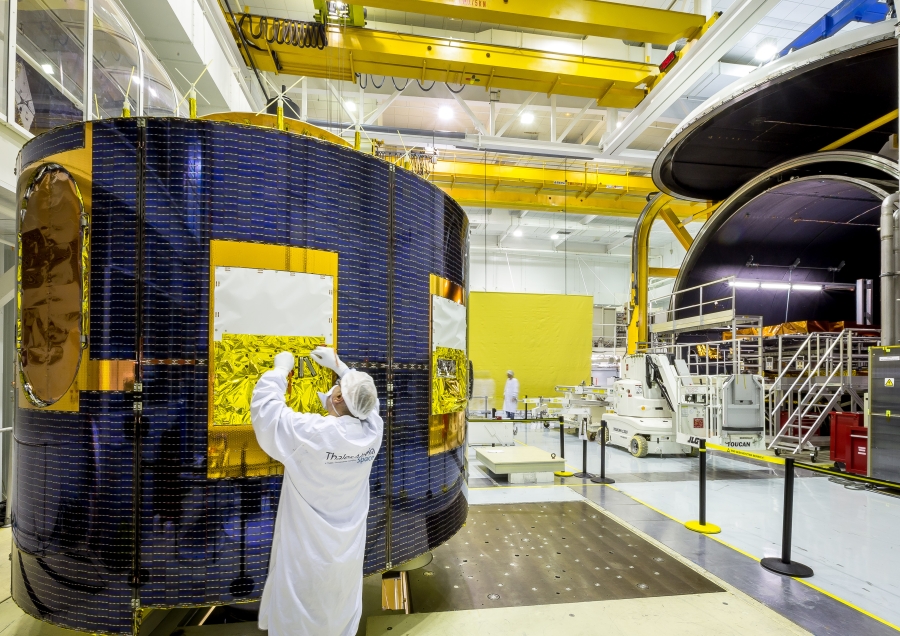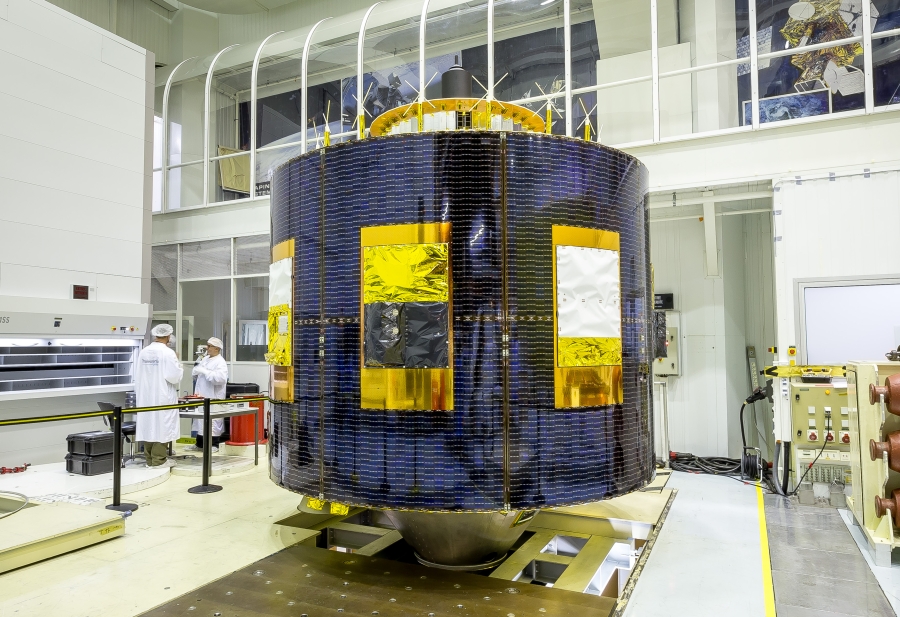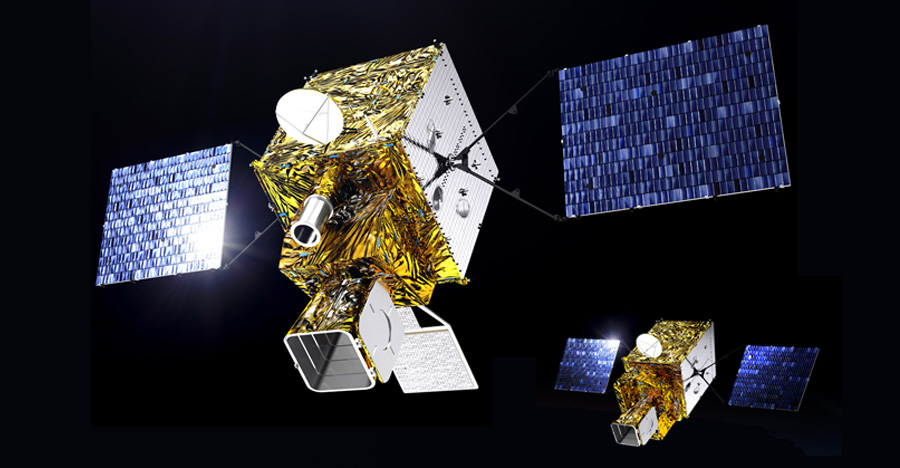MSG-4 launch a success!
MSG-4, the fourth and last Meteosat Second Generation (MSG) was successfully launched on July 15th, by Arianespace, using the Ariane 5 launch vehicle, from Europe's Spaceport in French Guiana. The satellite was built by Thales Alenia Space on behalf of the European Space Agency and EUMETSAT.
About MSG-4

MSG-4 will be operated by EUMETSAT and will provide meteorological data and monitor the climate across Europe from its position in geostationary orbit at 36,000 kilometers above the Equator, at 3.4. West longitude. MSG-4 will initially be stored in-orbit until it is needed as a replacement for the one of its predecessors, the MSG-1, MSG-2 and MSG-3 satellites, launched in August 2002, December 2005 and July 2012, respectively. The satellite will carry on the mission assigned to these second-generation satellites: provide meteorological observation capabilities for Europe until 2020.
About the second generation satellites

Meteosat Second Generation (MSG) satellites have made a strong contribution to improving our analysis of weather data. These spin-stabilized satellites (at 100 rpm) incorporate a number of technological innovations. Meteorologists benefit from higher image quality, because of a significant increase in the number of observation channels, along with better radiometric performance and shorter revisit cycles.
The nominal assigned mission is currently handled by the MSG-3 satellite, which provides an updated view of the Earth every 15 minutes. At the same time, MSG-2 provides a "rapid scan service", delivering a reduced, Europe-centered image every five minutes. MSG-1, launched in August 2002 and still operational, provides backup to ensure the continuity of these two missions.
Towards increasingly accurate meteorology
European meteorology has become increasingly accurate over the years, thanks to the advanced technology of the Meteosat satellite family. With the first-generation Meteosat satellites, images were updated every 30 minutes, a figure reduced to 15 minutes on the second generation. MTG (Meteosat Third Generation) will further reduce this refresh rate to 10 minutes, making weather forecasts increasingly accurate.
Thales Alenia Space, world leader in geostationary meteorology systems

As on Europe's first two generations of meteorological satellites, Thales Alenia Space is also prime contractor for the third generation, MTG, built in partnership with the German company OHB. The MTG system comprises six satellites, four imaging models and two atmospheric sounders. Including this latest generation, Thales Alenia Space will have built a total of 17 geostationary weather satellites: seven first-generation models, four second-generation and six third-generation.
Following MSG-4, two additional satellites dedicated to climate change monitoring and environmental management, also built by Thales Alenia Space, will be launched this year: Jason-3 and Sentinel-3A.
Regarding MSG-4, Jean-Loïc Galle, President and CEO of Thales Alenia Space, declared:
"Over the last 30 years, millions of people have watched weather forecasts based on Meteosat images, seeing high- and low-pressure zones, cloud cover and other striking satellite pictures on their TVs. In addition to these daily weather forecasts, Meteosat satellites provide vital data used to predict violent weather-related events, including storms, hurricanes and flooding, while also monitoring long-term climate changes. Customers have placed their trust in us since the beginning of geostationary meteorological systems. We continue to capitalize on our unrivaled expertise to give them increasingly sophisticated satellites, such as the MTG already under construction".
VIDEO: Liftoff of Ariane 5 with Star One C4 and MSG-4
More info on Thales Alenia Space press release: click here